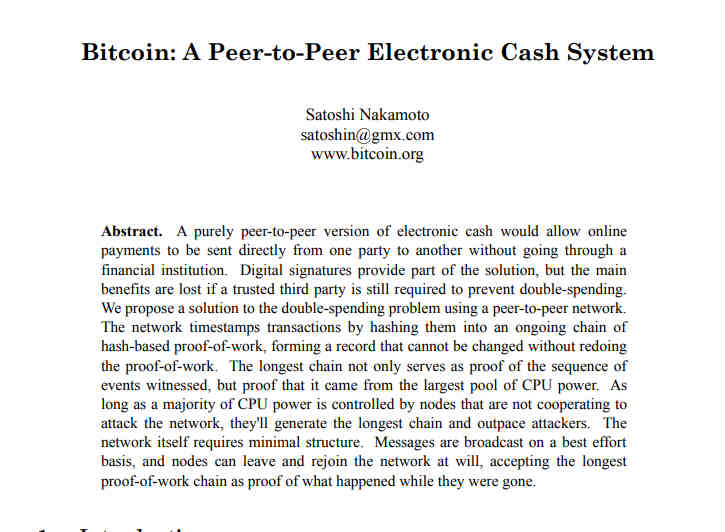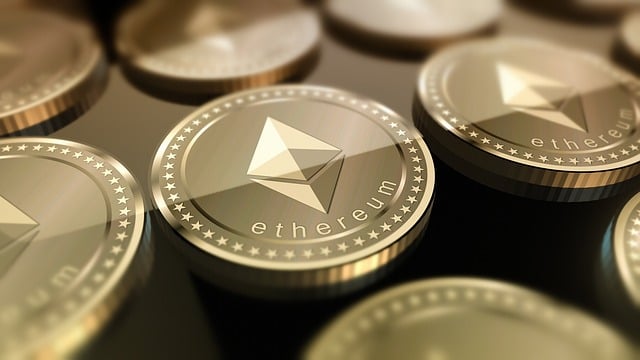October 30, 2025
Picture this: It’s 2008. The world is crumbling under the weight of financial Armageddon—banks collapsing like dominoes, trust in fiat evaporating faster than a gambler’s luck at the casino. Enter a mysterious whitepaper from an even more enigmatic figure: Satoshi Nakamoto. “Bitcoin: A Peer-to-Peer Electronic Cash System.”
The promise? A digital revolution. Money without middlemen, censorship-resistant, borderless cash for the masses. It was the punk rock of finance—raw, rebellious, and ready to stick it to the man.
Fast-forward 17 years. Bitcoin’s market cap flirts with trillions. Lambos litter the driveways of influencers who once mined it on old laptops. But peel back the layers of memes, laser eyes, and HODL mantras, and what do you find? A glittering facade hiding a creaky machine, puppeteered by the very power brokers it swore to dethrone. Is Bitcoin the future of money… or the greatest long con in tech history? Buckle up. We’re diving deep into the rabbit hole.

The Whitepaper Dream: P2P Cash That Never Quite Arrived
Let’s start at the source. Satoshi’s 2008 manifesto wasn’t some vague love letter to speculation. It was crystal clear: Bitcoin was designed as peer-to-peer electronic cash. Not a store of value. Not “digital gold.” Cash. You know, the stuff you use to buy coffee without a banker peering over your shoulder or a government slapping on a 30% fee.
The vision was elegant: Nodes talking directly to each other, transactions confirmed in blocks, secured by proof-of-work. No Visa. No PayPal. Just you, me, and a ledger that couldn’t be faked. It sounded utopian. Hell, it was utopian—for about five minutes in 2009, when you could send sats to a buddy across the globe for pennies and a prayer. But here’s the rub: That dream curdled faster than milk in the Sahara. Today, firing off a Bitcoin transaction feels like trying to hail a cab in a snowstorm with a carrier pigeon. It’s not just impractical—it’s a farce. Clunky as a Steam Engine in a Hyperloop.
Remember the last time you tried to use Bitcoin for, say, splitting a bar tab? Me neither. Why? Because it’s clunky as hell. The fees… During bull runs, they spike to $50+ per pop, turning a $5 Venmo into a luxury for oligarchs. Worse, it’s slow. Glacially, insultingly slow. The average confirmation time hovers around 10 minutes per block, but in reality? Hours. Days, if the network’s congested. Want to buy that latte before it gets cold? Better hope the barista’s got a time machine. Satoshi envisioned cash-like speed; we got something closer to Western Union on a bad dial-up connection. This isn’t evolution—it’s stagnation. While the world sprinted forward, Bitcoin hit the snooze button.
Frozen in Amber: While the Altcoin Army Marched OnBitcoin’s core protocol hasn’t seen a meaningful upgrade since… well, ever. It’s like that uncle who still rocks a flip phone and brags about it. The block size debate? A civil war that splintered the community into fork-fest factions. SegWit in 2017 was a band-aid; Taproot in 2021, a fancy hat on a corpse. Meanwhile, the crypto ecosystem exploded with innovators who actually listened to the whitepaper’s spirit:
- Litecoin: Charlie Lee’s “silver to Bitcoin’s gold” forked BTC early, cranking block times to 2.5 minutes and keeping fees low. It’s not perfect, but it’s usable—like cash, but digital.
- Nano: Zero fees. Instant confirmations via a block-lattice structure. Feels like magic: Send value across the planet in under a second, for free. No miners, no bloat. Pure P2P poetry.
- Bitcoin Cash: The fork that said, “Screw the 1MB block size limit—let’s scale like Satoshi intended.” Bigger blocks, cheaper txs, and a stubborn adherence to “digital cash” over “digital Fort Knox.”
- Monero: The privacy spectre that rose from Bytecoin’s 2014 ashes, wielding ring signatures and stealth addresses like a digital invisibility cloak. Transactions? Obfuscated by default, fees a whisper at fractions of a cent, and dynamic blocks that scale without the drama. It’s cash that doesn’t snitch—fungible, untraceable, and built for the shadows where real freedom hides, turning every spend into a ghost story the blockchain can’t tell.
These aren’t fringe experiments; they’re evolutions. Bitcoin? It’s a museum piece, revered but irrelevant for everyday use. The network’s “sound money” ethos morphed into a self-fulfilling prophecy: If no one uses it as cash, it must be a store of value. Convenient, that.
Lightning Network: The Half-Baked Hail Mary
Enter the saviors: The Lightning Network. Launched with fanfare in 2018, it’s supposed to layer speedy micropayments atop Bitcoin’s sluggish base. Channels open off-chain, zipping transactions like lightning (get it?). In theory, genius. In practice? Trash. Utter, steaming trash. First, liquidity. Your channel’s only as fast as the funds you lock up—and good luck finding peers with matching routes. It’s like a highway system where every on-ramp demands a tollbooth bribe and half the exits are gated communities. Second, centralization. Despite the hype, Lightning hubs are dominated by a handful of big players—exchanges and custodians—who hold disproportionate sway. Decentralized? Sure, if your definition includes “eight corporations control 80% of the flow.”
Third—and this is the kicker—it’s not compatible with the broader node ecosystem. Lightning nodes can’t seamlessly talk to vanilla Bitcoin nodes without awkward bridges. It’s a silo within a silo, forcing users into walled gardens. Satoshi’s P2P utopia? Reduced to a bolted-on afterthought that’s as user-friendly as assembling IKEA furniture blindfolded.
“Not Your Keys, Not Your Coin”—Or Is It?
Ah, the sacred mantra of Bitcoin maximalists: “Not your keys, not your coin.” Self-custody or bust! Run your own node, grip those private keys like Excalibur, and laugh at the plebs on Coinbase. Except… most don’t. The cold, hard truth? Over 80% of Bitcoin is held in custodial wallets—exchanges like Binance, FTX (RIP), and Kraken. ETFs from BlackRock and Fidelity have slurped up billions in “paper Bitcoin,” where you own shares in a trust, not the actual sats. It’s Wall Street’s wet dream: TradFi laundering crypto into index funds, complete with 12b-1 fees and SEC blessings.
The irony? This “decentralized” revolution handed the keys right back to the suits. Mt. Gox, Quadriga CX, FTX—each collapse a tombstone for self-sovereignty. Now, your HODL portfolio is just digits on a screen, redeemable only if the exchange doesn’t pull a Houdini. P2P cash? More like P2P promises.
Fungibility’s Fatal Flaw: Bitcoin Ain’t Private, Folks
For money to be real money, it needs fungibility: one sat is as good as another, no questions asked.
But Bitcoin? It’s about as fungible as a snowflake in hell. Every transaction is a public spectacle on the blockchain. Tools like Chainalysis let governments and hackers trace your spends back to your grandma’s bingo winnings. Tainted coins? Exchanges blacklist them. Privacy? A joke, unless you’re willing to tumble your UTXOs like a paranoid launderer.
Enter the real rebels: Monero. Ring signatures, stealth addresses, confidential transactions: XMR makes every coin identical, untraceable, untouchable. It’s cash as it should be: Private by default, fungible without friction. Bitcoin preaches freedom but delivers surveillance capitalism. Monero? It delivers. No wonder it’s been de-listed from every major exchange except soon-to-delist Kraken. Big Finance doesn’t like that.
Who runs this show, anyway?
Not Satoshi’s ghost. It’s the miner pools—AntPool, F2Pool, Foundry—controlling 70%+ of hash rate, colluding on fees and forks. And the hardware kings like Bitmain, churning ASICs that lock out hobbyists. It’s a cartel masquerading as code, a scam where the house always wins.
So, Is It a Good Investment?
(Spoiler: Decide for Yourself) Here’s the million-sat question: Is Bitcoin a good investment? So far? Hell yes. From $0.0008 in 2010 to $60K+ today, it’s minted more paper billionaires than a Vegas jackpot. Momentum is a mofo: network effects, institutional FOMO, and that halving hype cycle keep the price pumping like a dopamine drip.
But intrinsic value? That’s where the fairy tale crashes. Currencies have never been a solid bet; they don’t produce anything—no dividends, no yields, just vibes and volatility. Gold at least makes pretty jewelry and has physical properties which are used in electronics, prothesis, etc.
Bitcoin? It’s scarcity theater: 21 million cap enforced by code that’s one quantum computer away from checkmate. Unique? Scarce? Please. There are thousands of cryptocurrencies now, each with their own caps, twists, and tribes. Ethereum’s smart contracts? Solana’s speed? Cardano’s academia? Bitcoin doesn’t stand out beyond its first-mover fog and cultish brand.
It’s the MySpace of money: Nostalgic, dominant once, but creaking under the weight of better apps. Decide for yourself. If you’re chasing the rush, HODL on at your own peril. But if you want money, real, usable, private cash: look beyond the emperor’s new coin.
